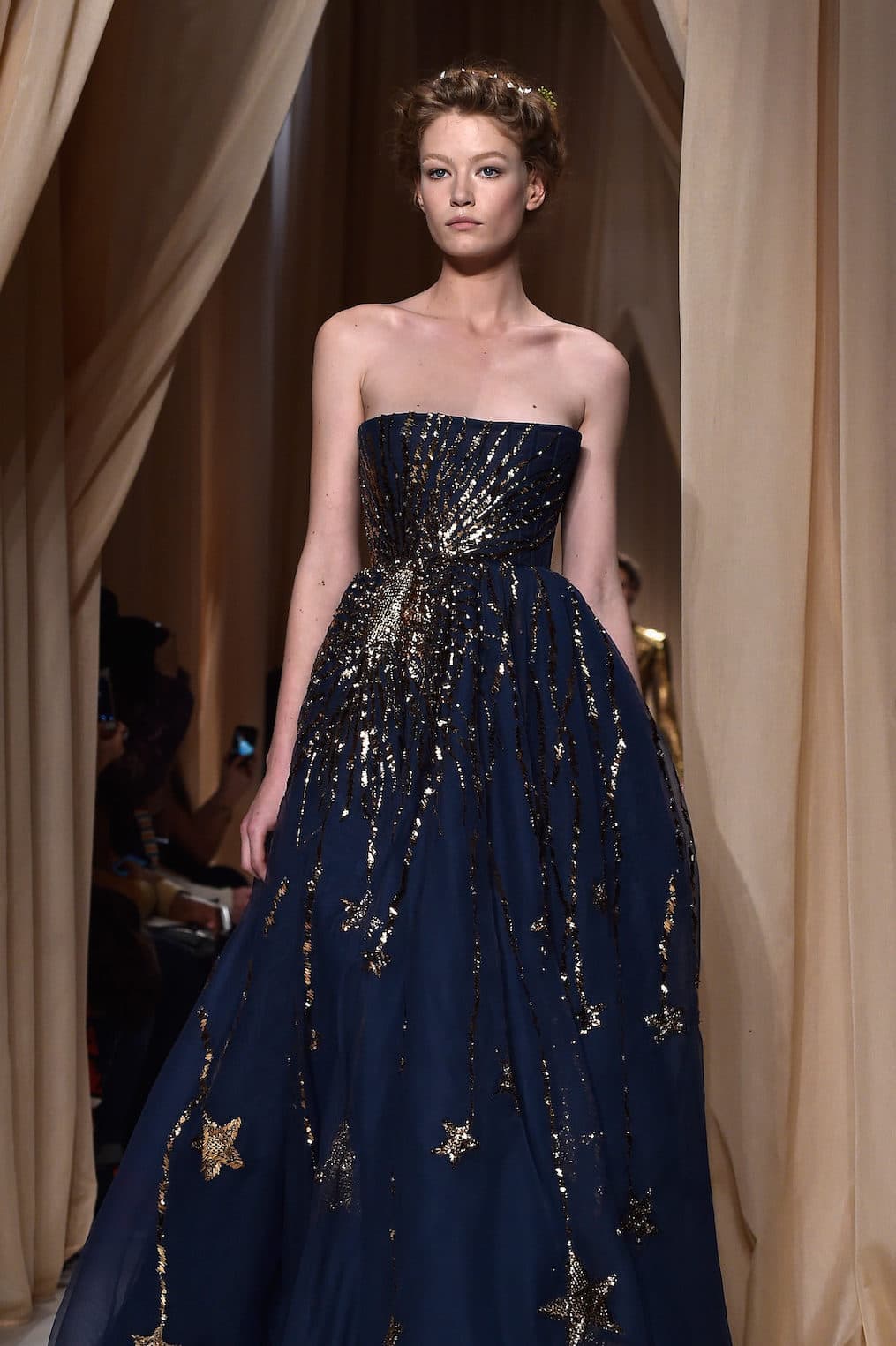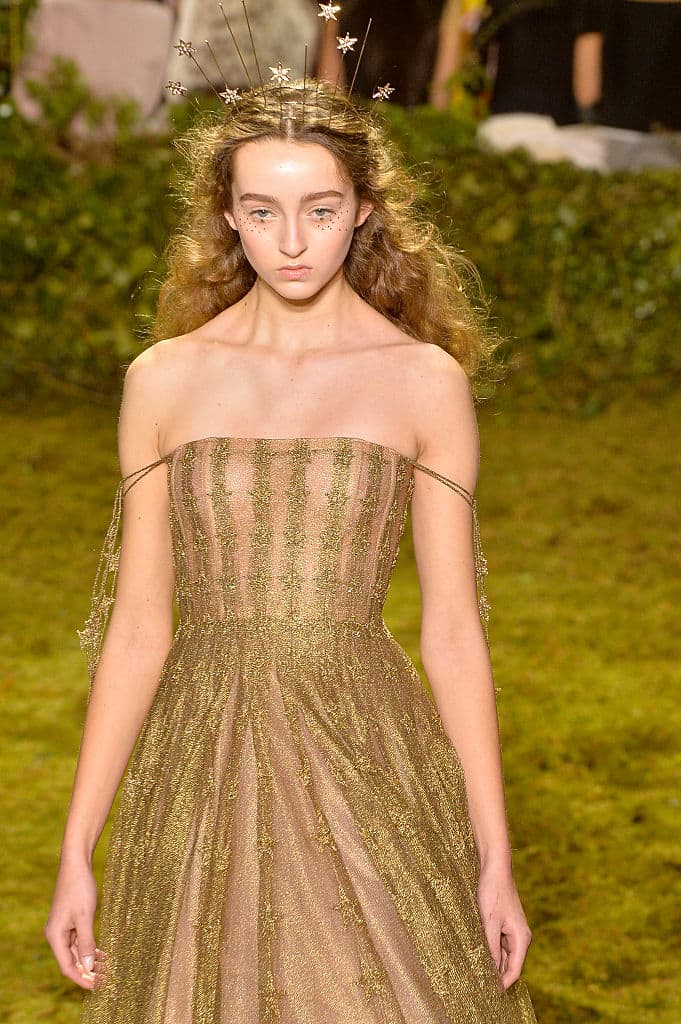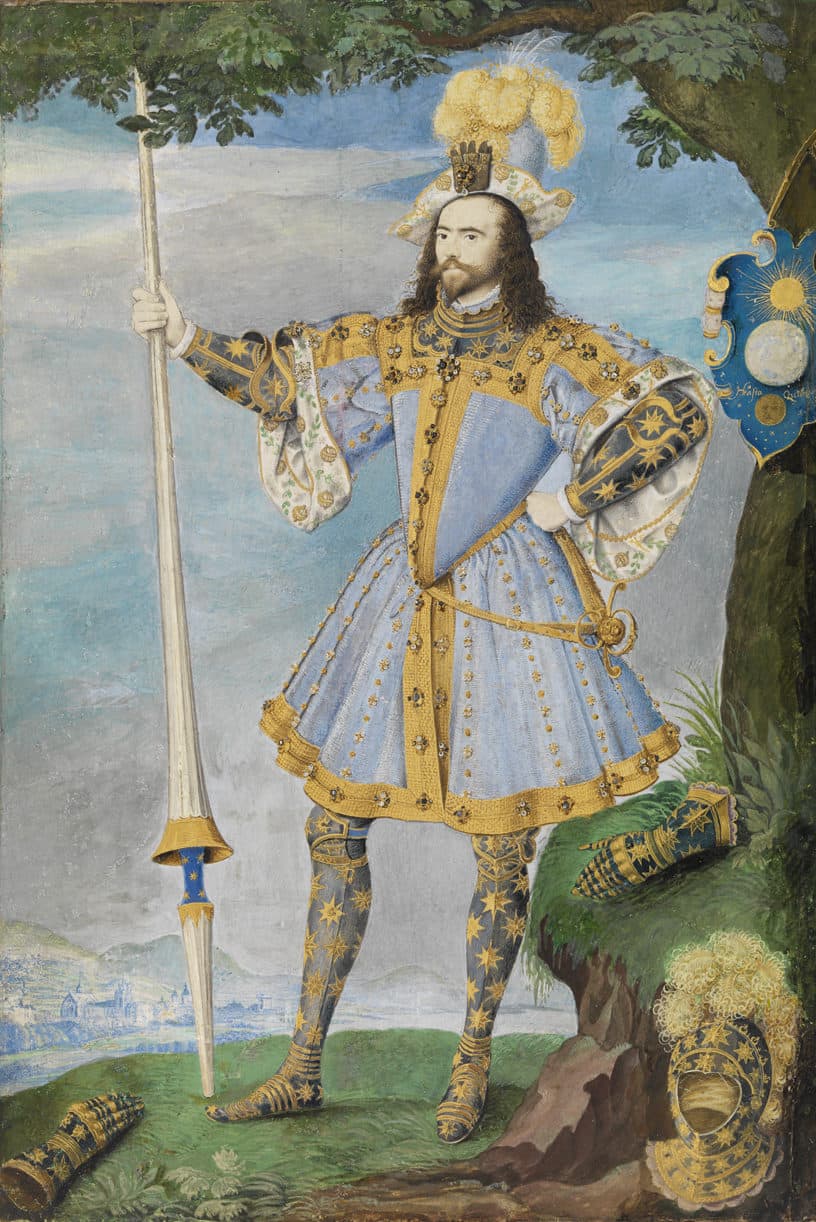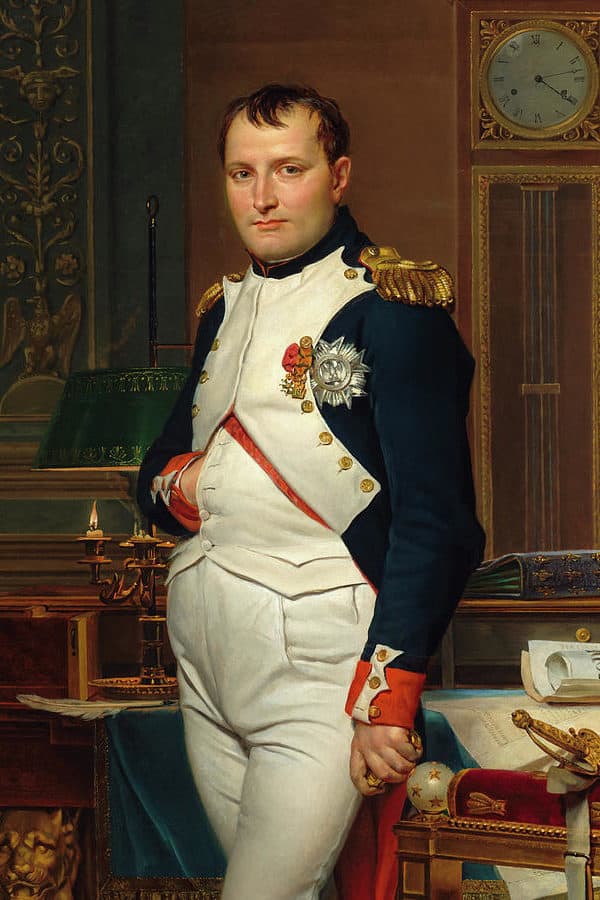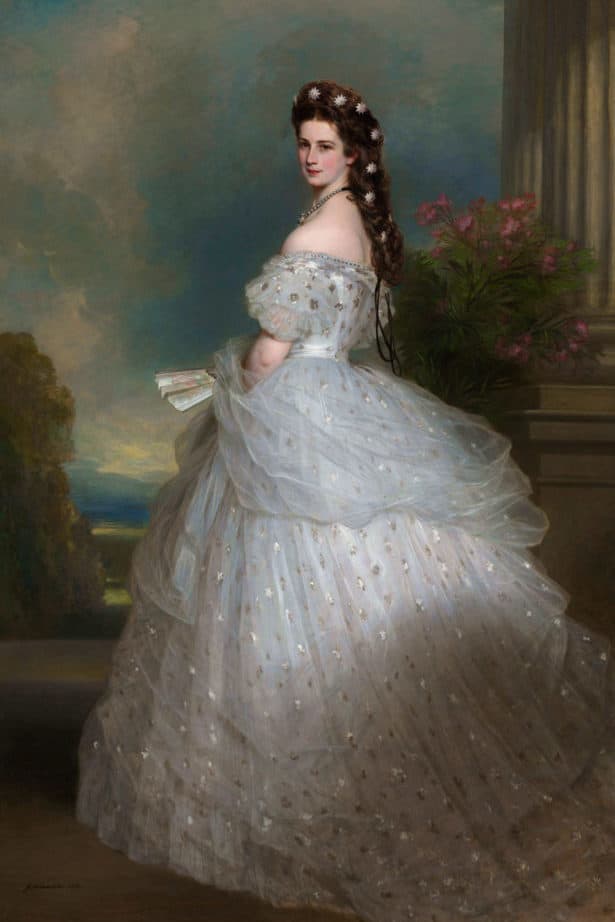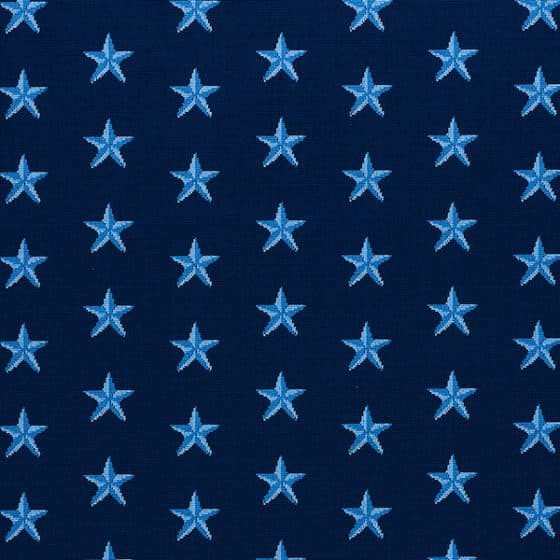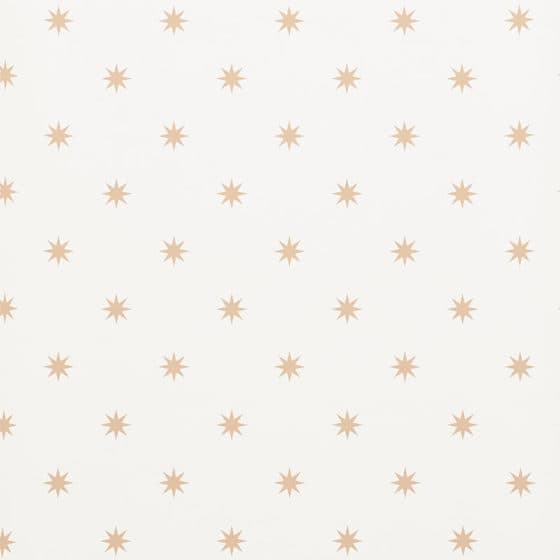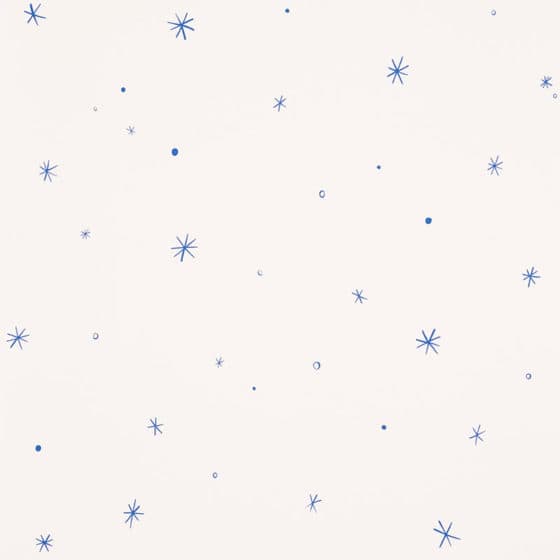They might be ubiquitous, but stars have always been a captivating force. From the earliest days that humans attempted to bring their world to life with paint and pattern, artists have embraced the visual power of the night sky—and for good reason. “Stars are mystical, they’re part of popular culture, they’re religious,” says textiles expert Jill Lasersohn. “People dream when they look at stars—they provide hope and wonderment.”
While the use of stars as a decorative motif has spanned millennia, their meaning has slowly shifted over time. The earliest representations were more literal—stars hanging in the sky to represent a heavenly presence. As centuries passed, they were embraced as the sign of kings and queens and powerful nations. From Mary to Madonna, from home décor to the golden awards doled out in elementary school, stars have continued to be a sign of something exceptional.
Valentino Haute Couture, Spring/Summer 2015Pascal Le Segretain/Getty Images
Christian Dior Haute Couture, Spring/Summer 2017Catwalking/Getty Images
In her ongoing series for The Edit, Lasersohn takes us on a journey through the evolution of the star motif, one she has a personal connection to. “I’m wallpapering a hallway ceiling in my apartment in the city with a Schumacher star print,” she tells us. “Stars on the ceiling—isn’t that funny!”
. . .

Stars seem like such an evergreen motif. When I was thinking about this conversation, I didn’t know where to start. To go back to the earliest days, do you know when stars first become a motif in textiles?
I love your word evergreen. I’m not going to lie to you, this was not an easy subject because it was much broader than I was expecting. I look at a lot of Old Master paintings for my research into textiles because that was the photography of the pre-photo times. With stars, I can go back to the 1100s. But I can also find stars on mosaics that go way back to the Byzantine. Religion really dominated from pagan mythology into the times of more organized Christianity. When you look at medieval art, stars are more religiously symbolic, and their meaning is more important than what you see today in popular culture.
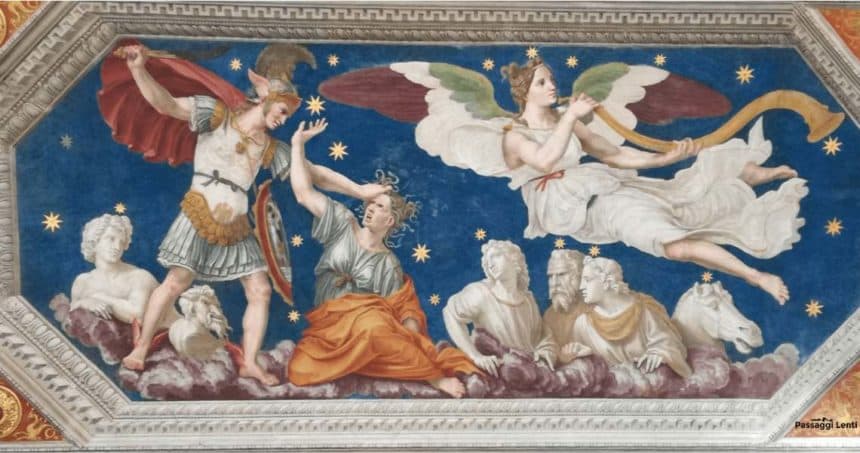
One of the 22 scenes of a fresco Baldassare Peruzzi painted in 1512 on the ceiling of the Loggia of Galatea at the Villa Farnesina in Rome. In this detail, Perseus is seen beheading Medusa amid a cobalt sky speckled with gold stars, which are in fact the Perseus constellation.
When you look back to the Old Master paintings are stars appearing mostly in decor and clothing?
Not so much décor – usually it’s celestial. When you go into the later centuries, there is always fabric or curtains behind every sitter. But in the early, early days, stars are the background. They were primarily ecclesiastical. After the plague, people had more money, so they started painting more domestic scenes. But before then, it was always religious because most people were illiterate, and the church had the money. They have always been linked to religion, and not just Christianity. From the Greeks and Romans to Judaism and Hinduism, I think everyone looked up at the stars as a sign of a higher being.
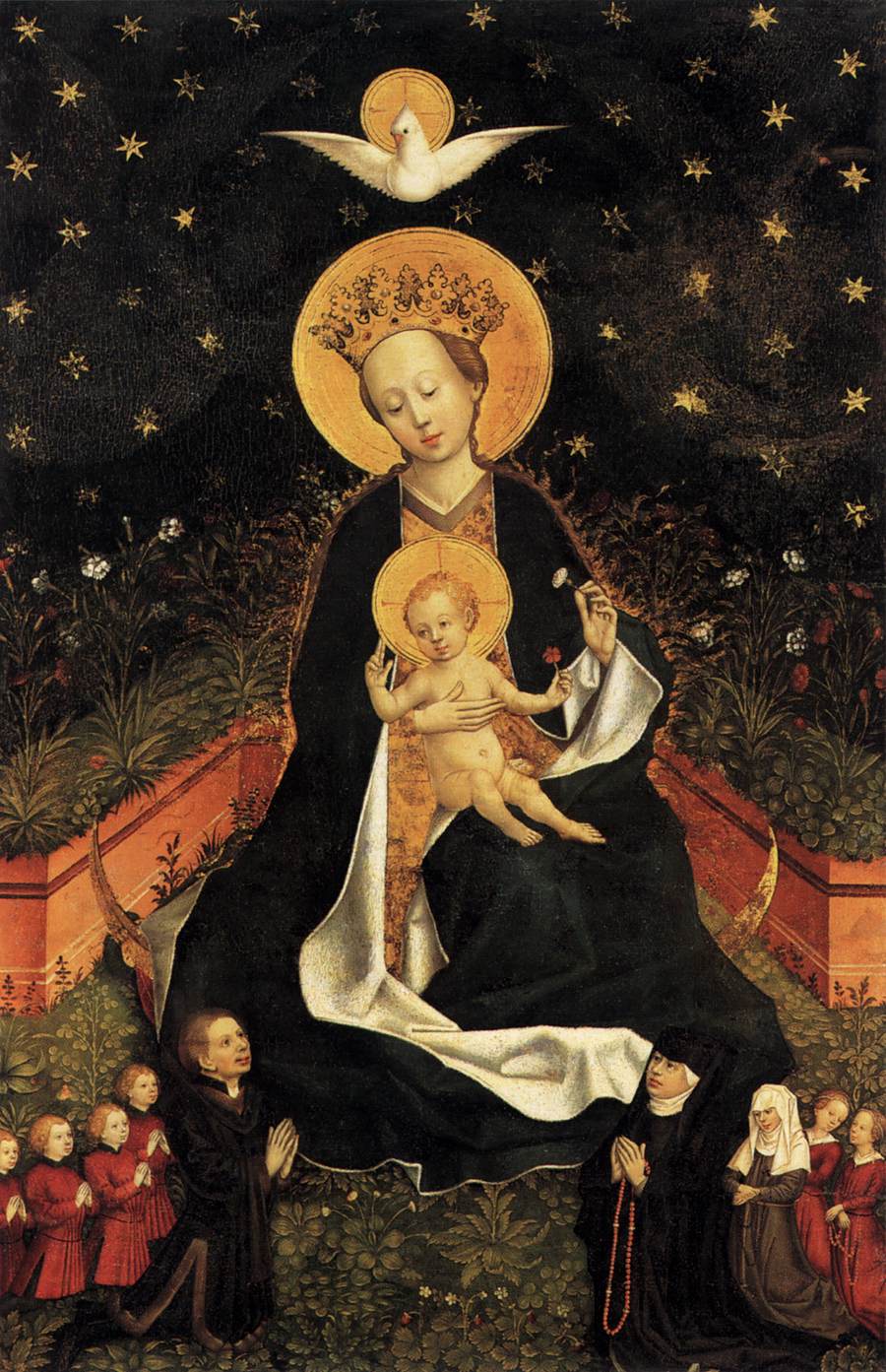
Anonymous, Madonna on a Crescent Moon in Hortus Conclusus, c. 1450.
So, stars started out appearing as stars themselves, represented mostly in the sky with a religious connotation. When did they start to drift onto things like textiles and curtains?
With Mary – she always had a star and a half moon. That was sort of her motif. And then it started to be used in interiors. Through the 18th and the 19th centuries, it seems like there’s either a fleur-de-lis or a star represented with most important people.
As they’re starting to be used in home décor, is this also when stars begin to appear on women’s gowns?
Josephine and Napoleon started the craze in more modern times. I believe Napoleon borrowed the stars from Greek and Roman mythology. He had a lucky star. And then there’s a portrait of Empress Elisabeth of Austria with the stars in her hair and her gown that is from the 19th century. When stars appear on textiles, they’re usually embellished or embroidered on, like in Elisabeth’s gown.
A miniature by N. Hilliard, of George Clifford, 3rd Earl of Cumberland (1558-1605).
Jacques-Louis David, The Emperor Napoleon in His Study at the Tuileries, 1812. Courtesy of the National Gallery of Art
Franz Xaver Winterhalter, Elisabeth of Austria, 1865.
It does seem sort of fitting that stars are mostly embellishments added on top. It somehow feels more special, like the frosting on top.
Yes, it’s interesting. It’s almost like pearls. Pearls were added to Elizabethan clothing and even Charles Worth added seed pearls to a lot of his couture gowns.

The lapis lazuli, yellow sapphire and white diamond Constellation Astrale Collier by Chanel.
I also loved all the pieces of jewelry that feature the star. This motif appears in fabric, but it also takes this almost more precious form, too.
You know, they say diamonds are from the Big Bang. Diamonds are the carbon from a big star blowing up. So, it doesn’t surprise me that the star is part of jewelry.
That Chanel necklace with the lapis lazuli background and brilliant gold stars is just incredible.
I know. I just think stars are special. They’re very geometric. They represent hope and mystery. I will go outside tonight, and I’ll look up, and it’s wonderment. It’s still wonderment. Space is still so much of a mystery.
I know we’ve talked a little bit about how this motif in textiles and jewelry is evergreen, but did you find in your research that there are certain times where it’s more popular than others?
Napoleon really embraced it. He was a genius when it comes to the power in symbolism. And then I think it became popular again when America had its bicentennial in 1976. I remember my mother always dressed me in red, white and blue around that time. I look like a Sergeant Pepper. My mom really went bananas with it and embraced the whole thing. So, stars became popular again, and that’s also when the American colonial style came back again. Stars are more than just a pretty motif; they really do symbolize nations.
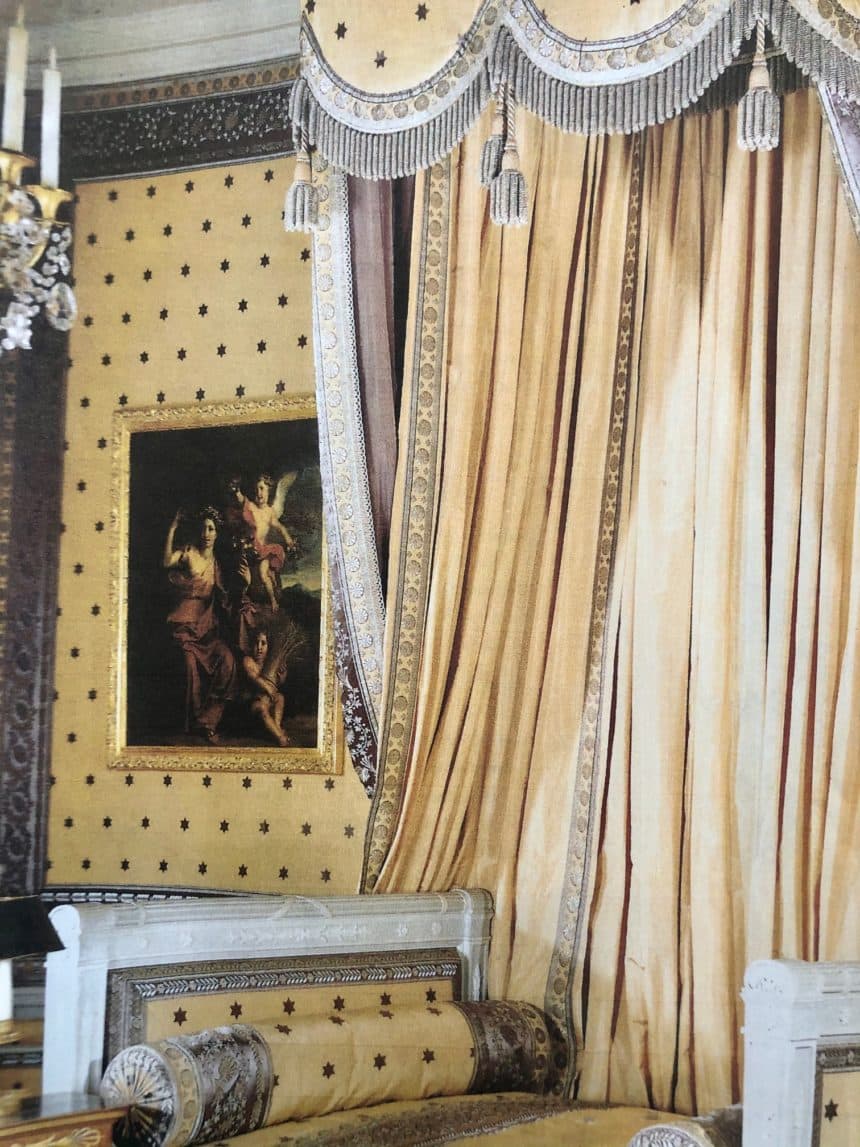
A detail of the star-strewn silk in Napoleon’s bedroom in Versaille’s Grand Trianon, c. 1809.
The resurgence of the colonial period was also coming right after the end of the space race. And now we might be on the precipice of another rise in an interest in the stars with all the private spaceflight companies who are popping up.
Of course. And recently the news about Mars. It’s endless. There’s a Serbian proverb from centuries ago that says, “Be humble for you are made of Earth. Be noble, for you are made of stars.” I love that. We all are made of stars.
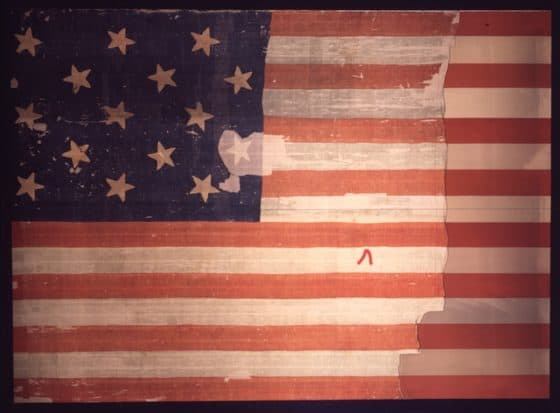
In July of 1813 during the Battle of Baltimore, Mary Pickersgill, a seamstress and flag maker in the Maryland city, was rushed to make a flag to fly over the federal garrison protecting the entrance to Baltimore harbor. This is the flag that inspired Francis Scott Key’s “The Star Spangled Banner.”Courtesy of the Smithsonian
This interview has been edited and condensed for clarity.
SHOOTING FOR THE STARS? CHECK OUT SCHUMACHER’S CELESTIAL OFFERINGS >
Etoiles et Points
Star Epingle
Star Gaze
Calisto
Spot & Star by Molly Mahon
Calisto















